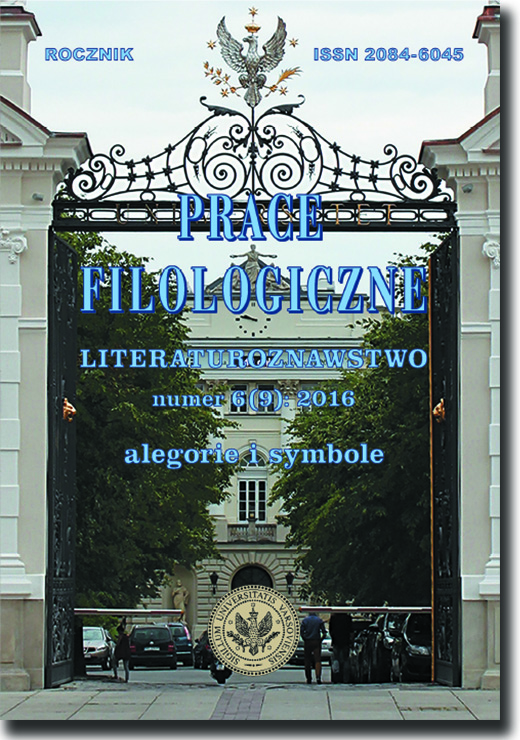Alegorie Zagłady w {Tworkach} Marka Bieńczyka i {Wieku 21} Ewy Kuryluk
Allegory of Holocaust in {Tworki} by Marek Bieńczyk and {Age 21} by Ewa Kuryluk
Author(s): Marta TomczokSubject(s): Literary Texts, Studies of Literature
Published by: Wydział Polonistyki Uniwersytetu Warszawskiego
Keywords: postmodernizm; Holokaust; retoryka; powieść; fabulacja; Postmodernism; Holocaust; rhetoric; novel; fabulation
Summary/Abstract: This article is a combination of Robert Scholes and Walter Benjamin’s conception of allegory and the review of its role in the postmodern novels about Extermination. The author assumes that Scholes’s conception is a supplement to Benjamin’s conception adopted by Marek Bieńczyk and compares certain excerpts of the essay entitled {Melancholia. About those who never find the loss}, which are related to Benjamin’s allegory, with novels {Tworki} and {Age 21}. They include classical allegories which may be found in Cesare Ripa’s {Iconology}, as well as identity allegories connected with Jewish characters of the prose hiding on the Aryan side during the war or with the act of concealing their identity after the war. The allegory in novels by Bieńczyk and Kuryluk becomes the most important, yet not seen before, rhetorical figure.
Journal: Prace Filologiczne. Literaturoznawstwo [PFLIT]
- Issue Year: 2016
- Issue No: 6 (9)
- Page Range: 157-170
- Page Count: 14
- Language: Polish

